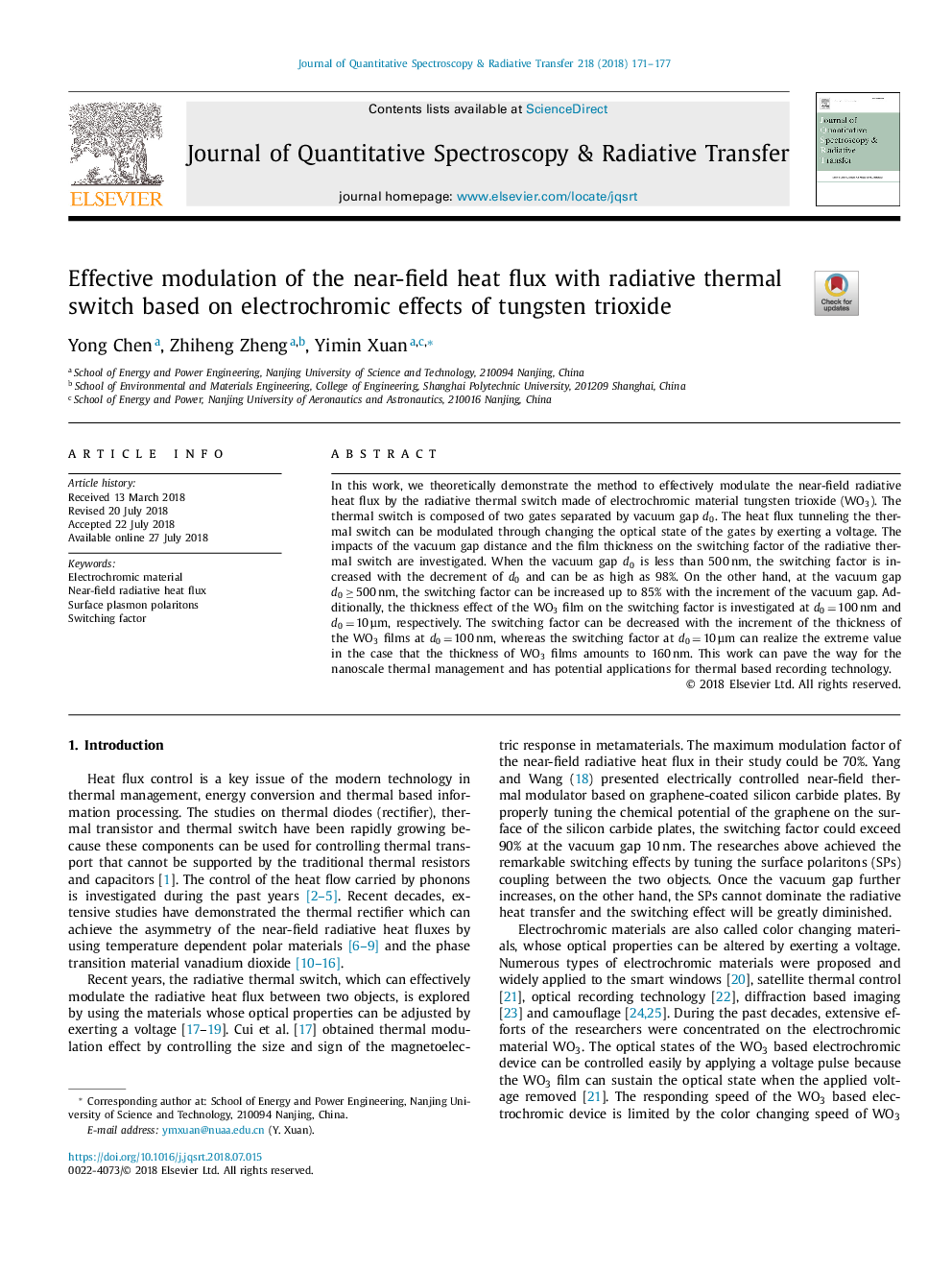| Article ID | Journal | Published Year | Pages | File Type |
|---|---|---|---|---|
| 7845791 | Journal of Quantitative Spectroscopy and Radiative Transfer | 2018 | 7 Pages |
Abstract
In this work, we theoretically demonstrate the method to effectively modulate the near-field radiative heat flux by the radiative thermal switch made of electrochromic material tungsten trioxide (WO3). The thermal switch is composed of two gates separated by vacuum gap d0. The heat flux tunneling the thermal switch can be modulated through changing the optical state of the gates by exerting a voltage. The impacts of the vacuum gap distance and the film thickness on the switching factor of the radiative thermal switch are investigated. When the vacuum gap d0 is less than 500â¯nm, the switching factor is increased with the decrement of d0 and can be as high as 98%. On the other hand, at the vacuum gap d0â¯â¥â¯500â¯nm, the switching factor can be increased up to 85% with the increment of the vacuum gap. Additionally, the thickness effect of the WO3 film on the switching factor is investigated at d0â¯=â¯100â¯nm and d0â¯=â¯10â¯Âµm, respectively. The switching factor can be decreased with the increment of the thickness of the WO3 films at d0â¯=â¯100â¯nm, whereas the switching factor at d0â¯=â¯10â¯Âµm can realize the extreme value in the case that the thickness of WO3 films amounts to 160â¯nm. This work can pave the way for the nanoscale thermal management and has potential applications for thermal based recording technology.
Related Topics
Physical Sciences and Engineering
Chemistry
Spectroscopy
Authors
Yong Chen, Zhiheng Zheng, Yimin Xuan,
